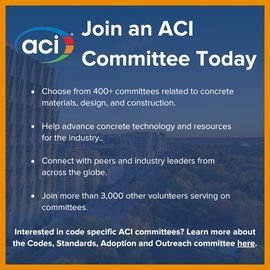
Pledge to “get the lead out” and a commitment to healthy homes
![]() Lead contamination and drinking water quality, most notably spotlighted by the Flint, Mich., water crisis, is a major health concern in many American communities. In 1986, the U.S. Congress amended the Safe Drinking Water Act (P.L. 99-339) to prohibit the use of lead plumbing fixtures and pipe fittings servicing water meant for drinking water. However, it did not require or fund the replacement of existing lead pipes. As pipes, fittings and solder containing lead age, corrode and contaminate drinking water, the need to replace the plumbing grows as reports of toxic lead levels increase. Recognizing the lead-related health risks American communities are facing, addressing lead in drinking water is a top priority for President Biden and Congress.
Lead contamination and drinking water quality, most notably spotlighted by the Flint, Mich., water crisis, is a major health concern in many American communities. In 1986, the U.S. Congress amended the Safe Drinking Water Act (P.L. 99-339) to prohibit the use of lead plumbing fixtures and pipe fittings servicing water meant for drinking water. However, it did not require or fund the replacement of existing lead pipes. As pipes, fittings and solder containing lead age, corrode and contaminate drinking water, the need to replace the plumbing grows as reports of toxic lead levels increase. Recognizing the lead-related health risks American communities are facing, addressing lead in drinking water is a top priority for President Biden and Congress.
In late March, as a part of the American Jobs Plan, President Biden pledged to replace 100 percent of the nation’s lead pipes and service lines. In an April 28, address to a joint session of Congress, the President highlighted “the clear and present danger” presented by 10 million homes and more than 400,000 schools and childcare centers that contain lead piping.
In furtherance of this focus, the U.S. Treasury has stated that funds under the American Rescue Plan’s Coronavirus State and Local Fiscal Recovery Funds (i.e., $350 billion in direct funds to state, tribal, territory and local governments), may be used to address “health disparities and social determinates of health,” which includes the remediation of lead hazards. Investments in drinking water and sewer infrastructure, including the replacement of lead service lines is also an eligible expense. The EPA estimates that there are between six to 10 million lead service lines in the country.
Congress is also considering several additional proposals.
To address lead-based tap and pipe hazards within homes, the Grants for Eliminating the Toxic Hazard of Environmental Lead in Our Towns Act of 2021 (H.R. 1376, “GET THE LEAD OUT Act”) would create a residential lead-abatement program with associated training and accreditation led by Environmental Protection Agency (EPA) guidelines. EPA and U.S. Department of Housing and Urban Development (HUD) would provide grants to incentivize replacing lead-based pipes and taps and facilitate training efforts. The proposal seeks a minimum of $9.5 billion for fiscal years 2022-2031.
To incentivize private sector activity that leads to pipe remediation, Sen. Sheldon Whitehouse (D-RI), Senate Majority Leader Chuck Schumer (D-NY), Rep. Steve Cohen (D-TN-09), and Rep. David McKinley (R-WV-01) are leading a bipartisan effort through the Home Lead Safety Tax Credit of 2021 (S. 1479/H.R. 2875). The bill would create a tax credit that would cover up to 50 percent of the cost of the “lead reduction activity” in a taxable year up to $4,000, depending on the covered activity. The credit, not limited to the removal of plumbing or fixtures, would also cover lead-based home hazards such as lead-based paint and affected soil.
The Drinking Water and Wastewater Infrastructure Act of 2021 (S. 914), would amend the Safe Drinking Water Act to provide $100 million per year for fiscal years 2022-2026, to assist with the replacement of lead service lines, prioritizing assistance for disadvantaged communities. The act would also create a pilot program providing $10 million per year to identify lead service lines and as much as $50 million to assist schools and childcare programs with voluntary lead testing and remediation of lead contamination in drinking water. To date, the Drinking Water and Wastewater Infrastructure Act of 2021 has cleared the Senate and awaits action in the House. In the meantime, the House is working on advancing other measures such as the Climate Leadership and Environmental Action for our Nation’s Future Act, (H.R. 1512, “CLEAN Future Act”), would provide $4.14 billion and $5.5 billion per year over 10 years (fiscal years 2021-2031) for the Drinking Water State Revolving Fund (DWSRF), and expand the program to cover lead service line replacements. The Water Affordability, Transparency, Equity, and Reliability Act of 2021 (S. 916, “WATER Act”) would expand EPA’s Drinking Water State Revolving Fund’s (DWSRF) eligible uses to cover lead service line replacement and permit the EPA’s school drinking water grant programs to cover costs associated with replacing drinking water fountains, drinking water coolers and bottle filling stations, and would increase funding an additional $1 billion per year for fiscal years 2021-2024.
On June 24, President Biden revealed the framework of a bipartisan infrastructure deal in the Senate that would include the largest investment in clean drinking water infrastructure in history. It is likely that pieces of the above proposals will be a part of the legislative package the Senate will develop to implement the framework in the coming months.







